The Perfect Duck Breeds to Add to Your Homestead
Check out some of the best backyard duck breeds for your homestead! Whether for eggs or meat, there’s a breed of duck for you.
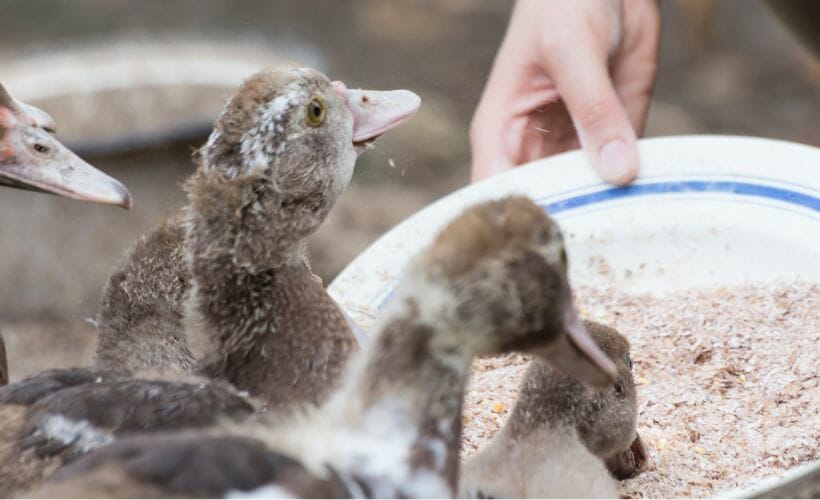
Are you looking to add some ducks to your homestead for eggs and meat, or are you still looking for a good reason to add them? Humans have kept ducks for centuries, and their eggs and meat are both delicious and nutritious. The perfect duck breed for your homestead will depend on what you’re looking for.
I’ll share why these breeds are great for your homestead, the unique characteristics of each one, and when to expect eggs and meat to come from them. Whether you’re a backyard chicken enthusiast looking for a new project or an experienced livestock farmer wanting to add ducks to your homestead, this post has all the information you need to choose the perfect breed.
Duck Breeds for Meat Production
Duck meat has a flavor strong enough to satisfy any red meat enthusiast. It’s fattier than chicken, and when cooked properly, its tender, moist, and fatty properties make it a heavenly treat for carnivores. Duck skin is notably thicker and fattier than turkey or chicken, delivering an extra-rich flavor that will have homesteaders returning for more.
Heavy and medium-weight ducks are typically raised for meat production. The main breeds for meat production are the Pekin, Muscovy, and Rouen.
Pekins
Pekin ducks are even-tempered, making them relatively easy to handle and making good pets. They also produce a large amount of rich-flavored, juicy meat. This duck’s meat is highly sought after for its flavor and moist texture. Furthermore, it is a healthier alternative to other meats as it is lower in saturated fat and cholesterol. The Pekin duck is an ideal choice for producers that need a reliable, high-quality source of duck meat.
- Drake Weight: 10lbs
- Hen Weight: 9lbs
- Processing Age: 6-12 weeks
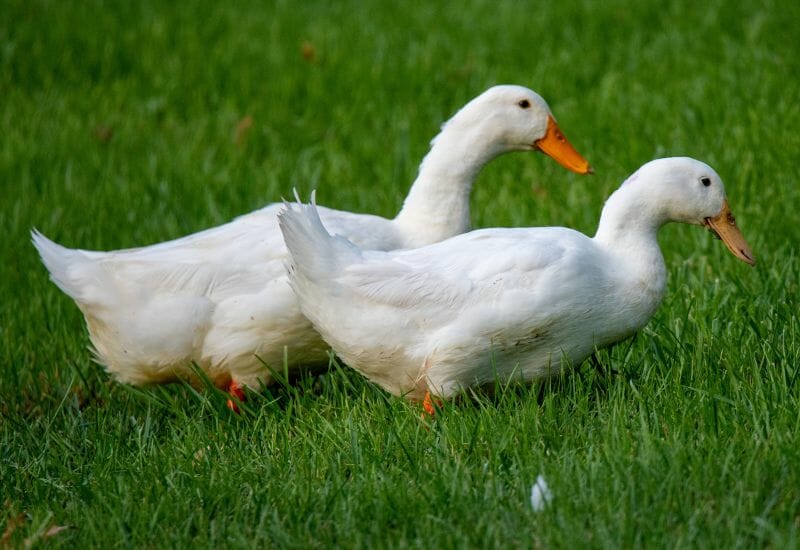
Muscovies
If you’re looking for a bird that produces lean, flavorful meat and free ranges well, the choice should be clear: the Muscovy duck. But are they actually ducks? Well, maybe not.
Unlike all other domestic ducks, the Muscovy isn’t derived from mallards. In fact, it’s been called into question whether Muscovies are actually ducks or a separate perching waterfowl classification of its own. Only in body shape are they like ducks. They nest, attack predators, hiss like a goose and roost like a chicken. Their plump breast is similar to the breast of a turkey.
- Drake Weight: 10-15lbs
- Hen Weight: 6-8lbs
- Processing Age: 12-16 weeks
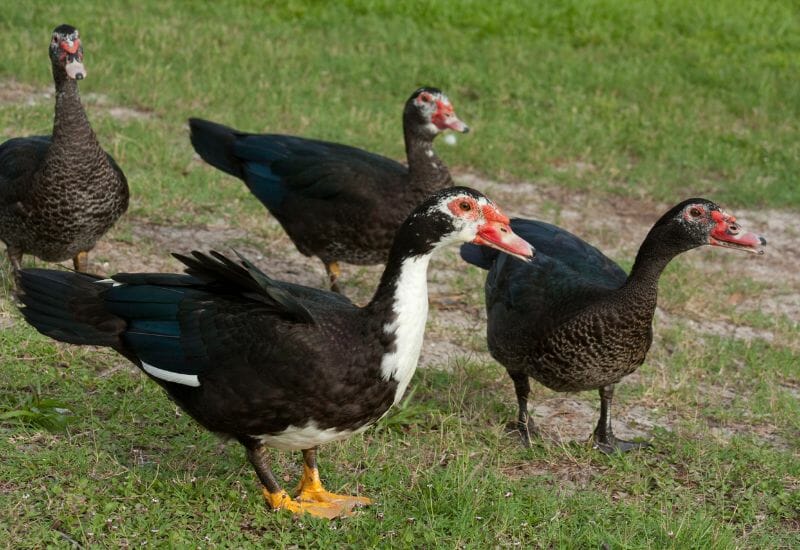
Rouens
Rouen ducks are one of the larger duck breeds, and the large size of their meat makes them an excellent option for raising alternative protein sources. The firm, flavorful meat of the Rouen duck is a favorite amongst chefs. In addition, Rouen ducks are the easiest breed of duck to raise, making them an ideal choice for an easy-to-maintain farm. With their hearty appetite and hardy constitution, you’ll be able to raise healthy Rouen ducks in a short amount of time.
- Weight: 9-10lbs for males and females
- Processing Age: 10-12 weeks
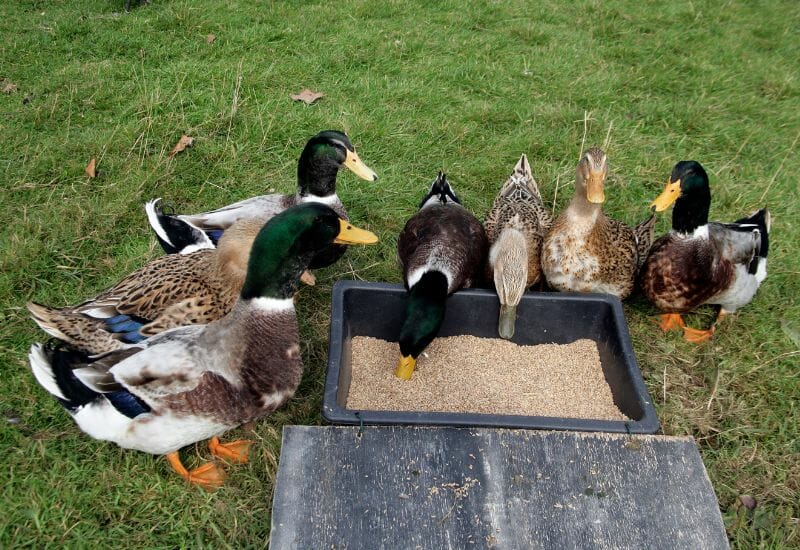
For information on processing your meat ducks, check out Lee Traister’s post, How to Butcher a Duck: a Step-by-Step Picture Tutorial.
Duck Breeds for Egg Production
Ducks are a wonderful source of eggs on your homestead. Not only are they an excellent source of protein, but duck eggs can be used in various ways. Duck eggs are said to have a higher nutrient content, including a higher amount of fat and protein. They also are known to have a larger and richer yolk than chicken eggs.
If you want to enhance the flavor of your baked goods, consider using duck eggs. Their larger size makes them ideal for making larger-sized cakes and pastries. Duck eggs will give you the best results if you want to create a more robust flavor in dishes like custards and ice cream. Not only are they great tasting, but they also provide your family with a much-needed source of healthful nutrition.
The standout breeds for egg production are the Indian Runners, Khaki Campbells, and Welch Harlequins.
Indian Runners
Indian Runner ducks cannot fly, are lightweight, and stand upright like skinny little penguins. They run rather than waddle, which is how they get their name. Runner ducks don’t make nests and often drop their eggs wherever they are. Because of their small size, runners eat less feed than meat ducks.
- Production: 300 eggs per year
- Egg Size: jumbo
- Egg Color: blue-green
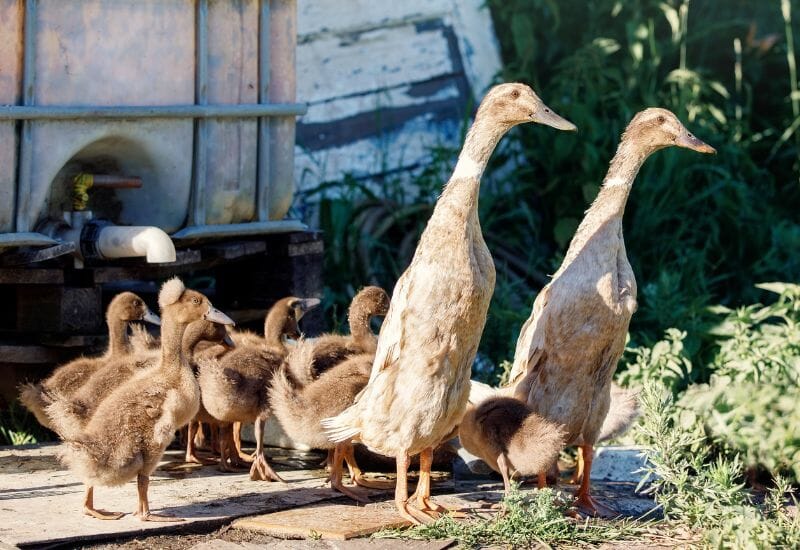
Khaki Campbells
Adele Campbell developed Campbells in the late 1800s. They are a cross of a Runner and a Rouen in an attempt to create a breed of ducks that would lay well but have bigger bodies. The offspring were crossed with mallards to increase their hardiness. There is only one variety of Campbell ducks—khaki. We have khakis and have been very happy with them. They seldom become broody, but we have a couple that have brooded in the past. They lay an off-white egg.
- Production: 280 eggs per year
- Egg Size: medium
- Egg Color: white
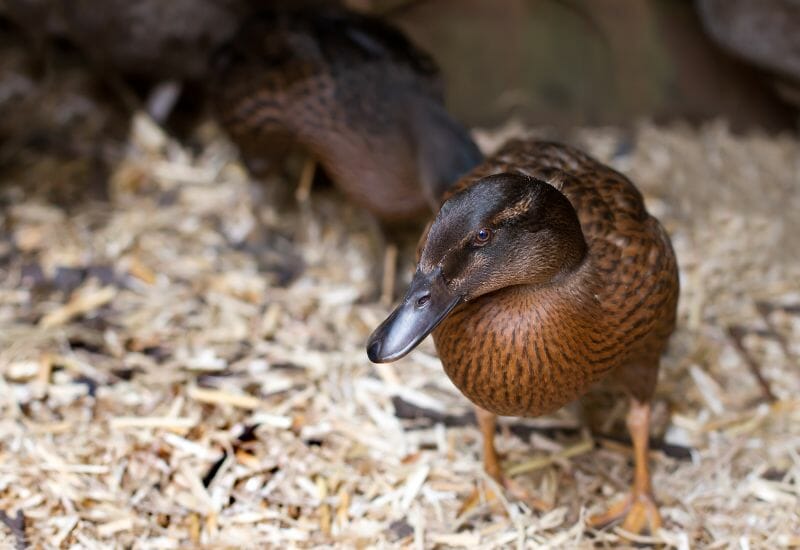
Welsh Harlequins
Another stellar layer is the Welsh Harlequin duck. This breed is an excellent choice for any poultry keeper looking for an eye-catching addition to the flock, as they come in various captivating color combinations. Welsh Harlequins are extremely friendly and highly sociable, making them a great choice for anyone who wants a flock of friendly ducks to greet them in the morning.
- Production: 300 eggs per year
- Egg Size: large
- Egg Color: white or buff
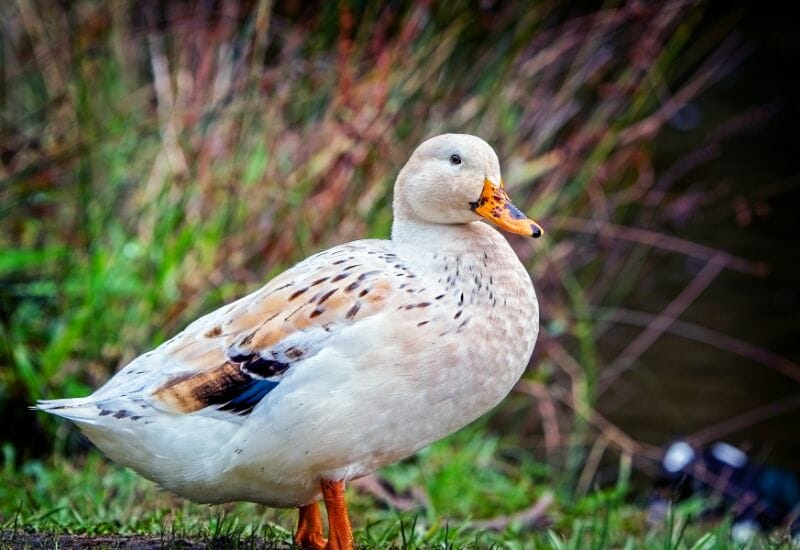
Dual Purpose Duck Breeds
If you have a small homestead and want to raise a bird that can be used for meat and eggs, you’ll want a dual-purpose duck breed. These birds are heavy enough to make processing worthwhile but also highly productive layers.
Cayugas
Not only do Cayuga ducks lay a good number of large eggs, but they are also excellent for meat production. The mature Cayuga ducks weigh between 6 and 8 pounds with dark green to black feathers. You can expect 100-150 black or gray eggs annually. They are well-suited for free-ranging, and their hardiness and hearty appetite make them ideal for these environments. The distinct color of the Cayuga duck is an added bonus, giving them a unique look that will stand out.
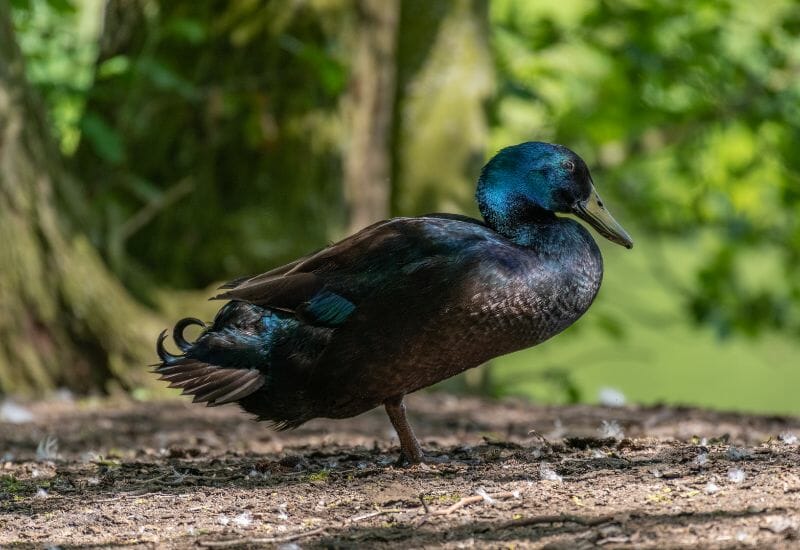
Buff Orpingtons
The Buff Orpington is a docile, easy-to-handle bird. They are friendly and sociable, making them an ideal choice for those who want to keep a flock. Plus, they have an impressive egg-laying capacity with about 200 white eggs per year. They range in weight from 7-8lbs. These birds have a good feed conversion ratio and can withstand various environmental conditions, making them an ideal choice for backyard farmers.
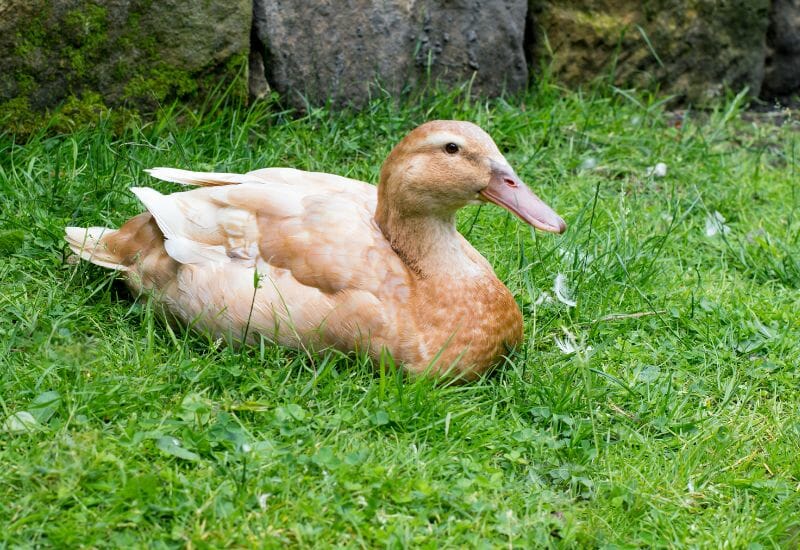
Magpies
Magpie ducks have a calm and docile temperament, making them simple to handle and a great choice for small farms or homesteading lifestyles. Beyond that, Magpie ducks make excellent foragers and can help you clear the ground of pesky weeds. In addition, their beautiful coloring adds a splash of beauty to any landscape or garden. They range in weight from 4 1/2-6lbs and lay approximately 220-290 greenish-blue, brown-speckled eggs yearly.
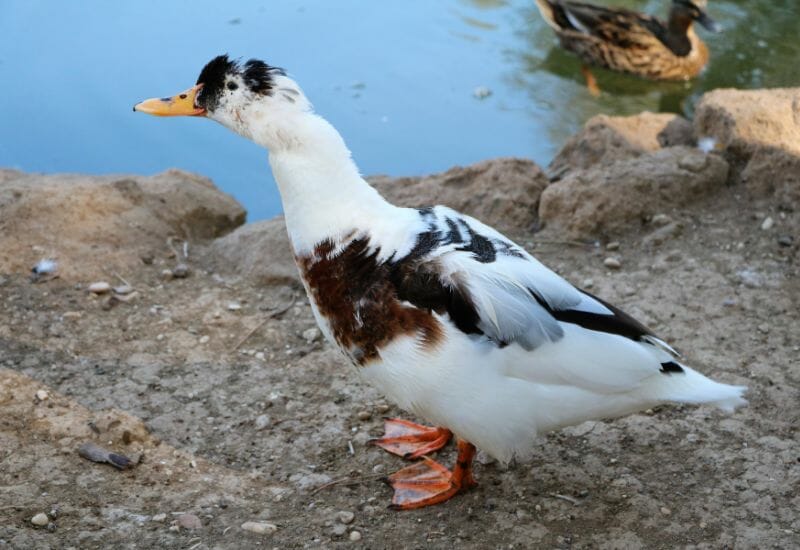
Black & Blue Swedish
Swedish ducks come in two colors which are actually considered different breeds. Blue and black. Swedish are similar in size to the Rouen and are very hardy ducks. They are heavy enough to be used for meat, weighing 5-6 1/2 pounds, and lay approximately 180 white or green eggs annually. We have Blue Swedish duck breed and have fallen in love with this flightless duck.
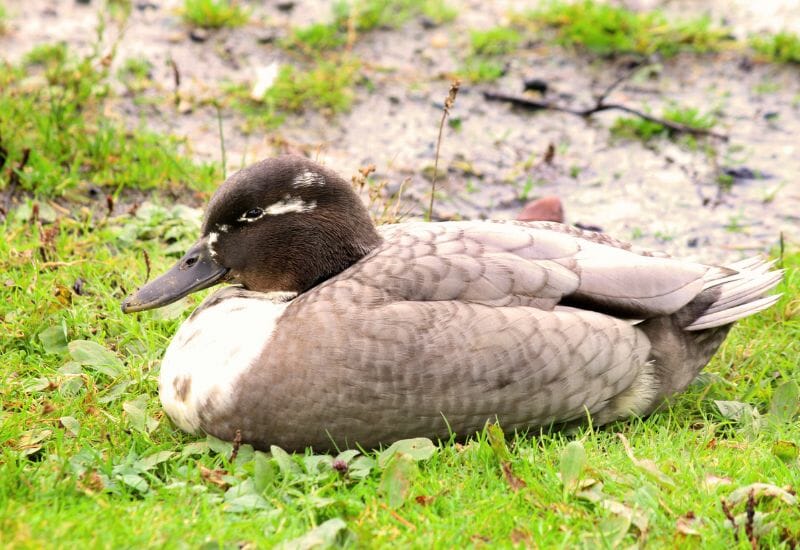
From the large-bodied Pekins to the run-instead-of-waddle Indian Runners, every breed of duck has its own specific qualities and benefits. If you’re a homesteader looking for a reliable source of eggs and meat, any of these breeds could be the perfect fit. With the right breed and care, you can surely gain the nutritional benefits and enjoyment of having ducks on your homestead.
If you’ve found value in this blog post and enjoyed reading it, why not share it with your Pinterest community? Pin the image below and spread the love!
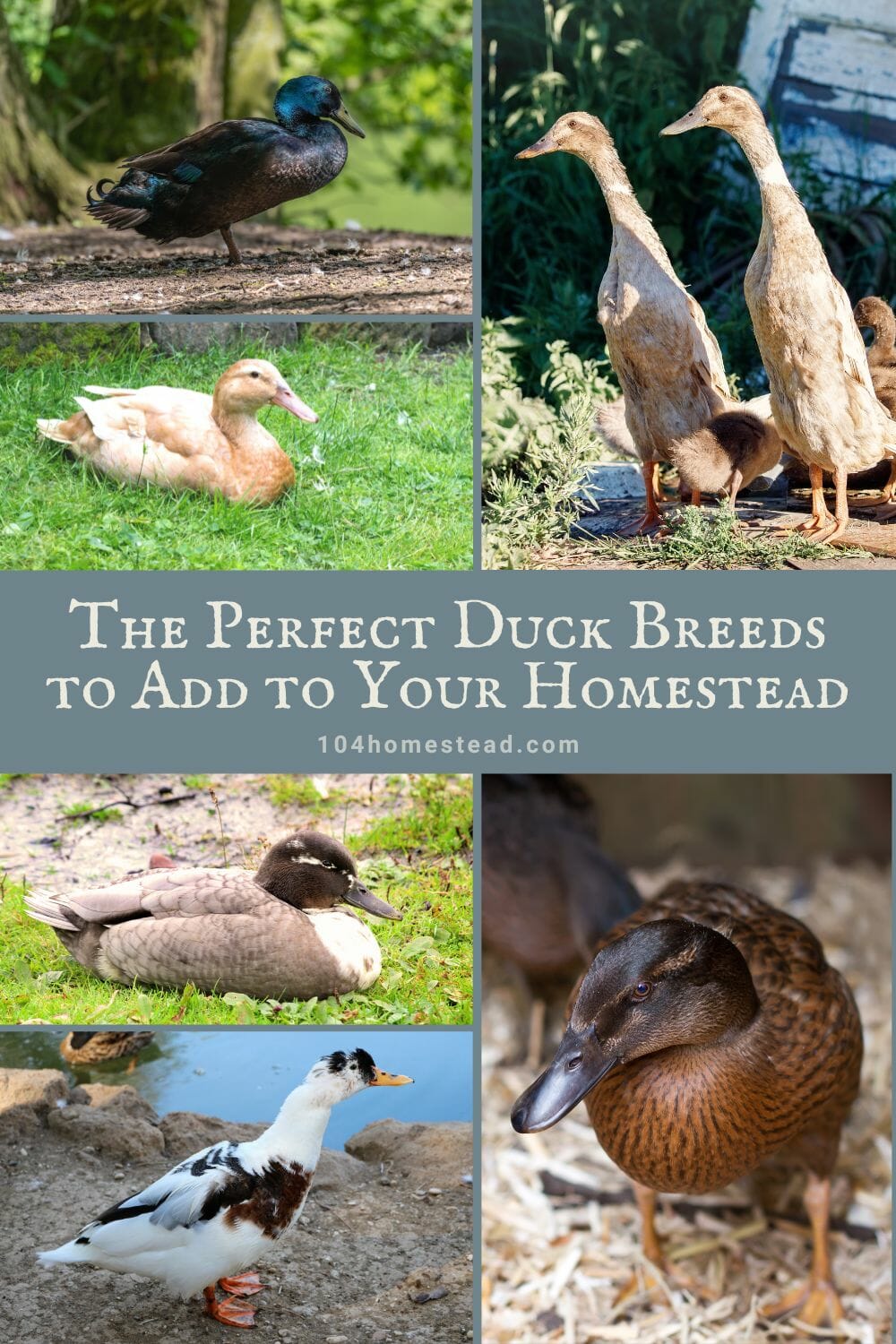

Hello we live in texas on the dickinson bayou. Were sort of starting out our home stead. We have about 1.5 a res with 150 feet of waterfront on the bayou. I’ve been mulling getting some ducks but am sort of concerned about them swimming away or breeding with will d ducks shoukd we consider raising ducks if sonwhat kind. Wed be primarily interested in them as pets and maybe for eggs. I’d prefer to let them free range like our chickens do. Please advise
I have 8 female and 5 male khakis. I am adding 10 more females. I was thinking 9 Welsh Harlequin and 1 khaki. I want birds around the same size and good layers. Is this good or do you have recommendation of different females?
I have raised muscovy for 4 years and each year I’ve had one that always dies. They either eat something they arent supposed to or wont go into the warm shelter I provide them during the winter and am currently getting out of them because I’m always losing them. That’s what led me to this post. I’m now on a desicion between welsh harlies or swedes because I feel like they might be better suited for my homestead. But I wont be starting that up until my fiance and I have a place of our own so I can make sure my duck pen area is cleared of anything harmful and that I can build the type of warm shelter that will better suit the ducks and myself lol I own ancona ducks right now and they are the best they can gain up to 4 or 41/2 pounds of meat and are a dual purpose bird. I love them so much and will be keeping them I have two males and 3 females
IM just curious why you mentioned that only the Mallard have Drake feathers, that’s not accurate at all. Most domestic male ducks have the curled feather. I would advise you to amend your information as it is inaccurate.
Hi Tammie,
The sentence right before that states that all domestic breeds of ducks come from mallards. All domesticated ducks (true mallards and mallard hybrids) have a drake feather. Most wild ducks do not.
I started with Muscovies, but the females flew off at different times and in a woodland, I’m sure they ended up bobcat food. I ended up with a mixed dual purpose flock. Buff Orpington hen ducks and drakes, and Cayuga hen ducks. Buff Orpington drakes over Cayuga hen ducks result in sexlink ducklings, which is useful if you want to keep and/or sell hen ducklings (charcoal drakes and chocolate hen ducks.) While the literature says they are about the same weights, I found the Cayuga to dress out just a little bit heavier. Great winter layers, good broodies (particularly the Buff Orpington), and great dual purpose naturally reproducing flock.
From what I know there are no hen ducks. A female is a duck and. The male is a drake.
I love Muscovies ours are very smart and seemed to have a sense of humor. Ours also do some tricks and got along well with the chickens. They do all kind of bunch up away from the other ducks and chickens when they go in for the night so they might be a little stuck up :). We have females who fly and look gorgeous in the air but they only fly when they are young ( under a year or so ) and no males every flew. Not sure maybe weight is a factor. We didn’t eat ours they were pets and we called it duck TV because they were so fun to watch.